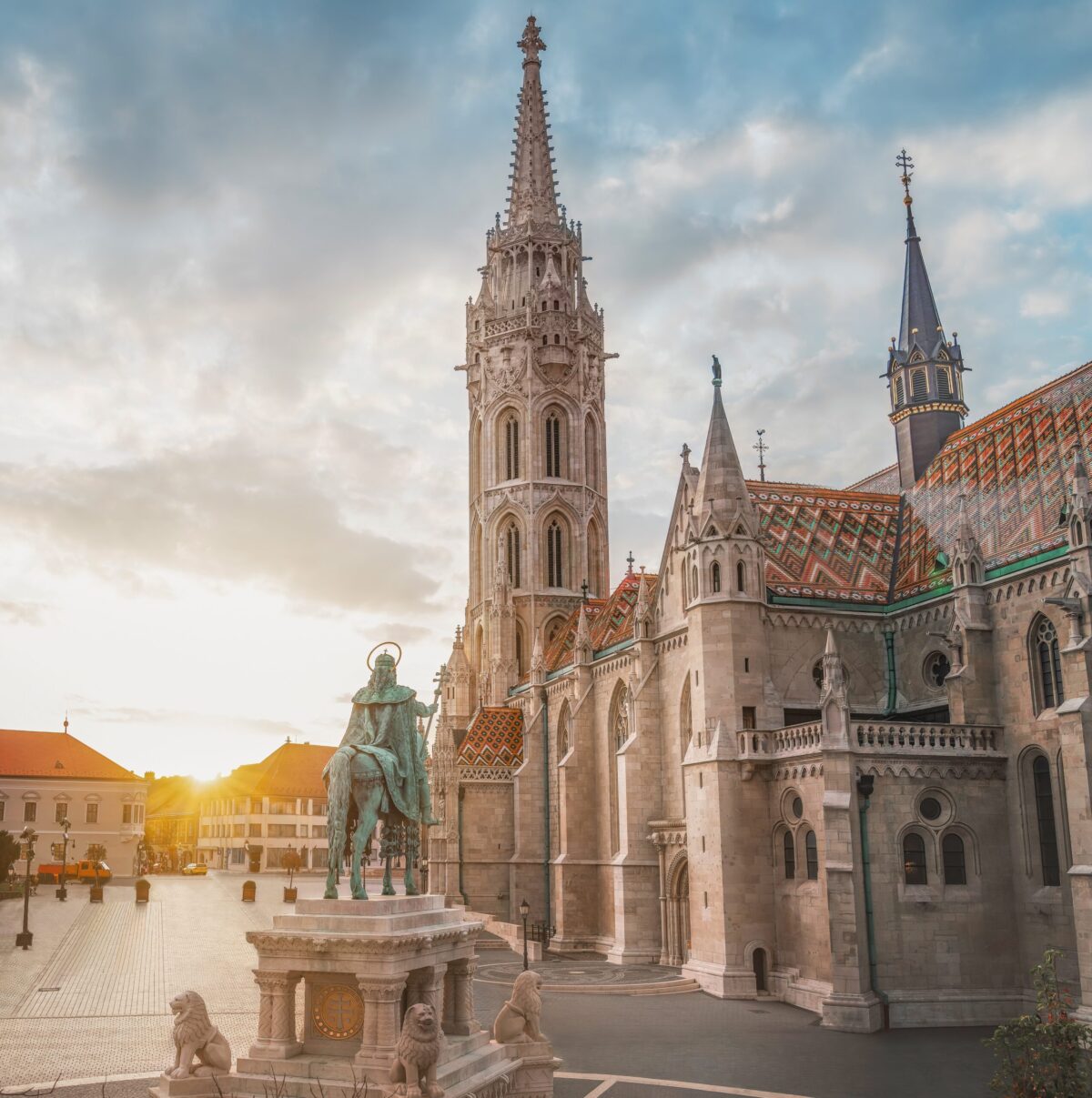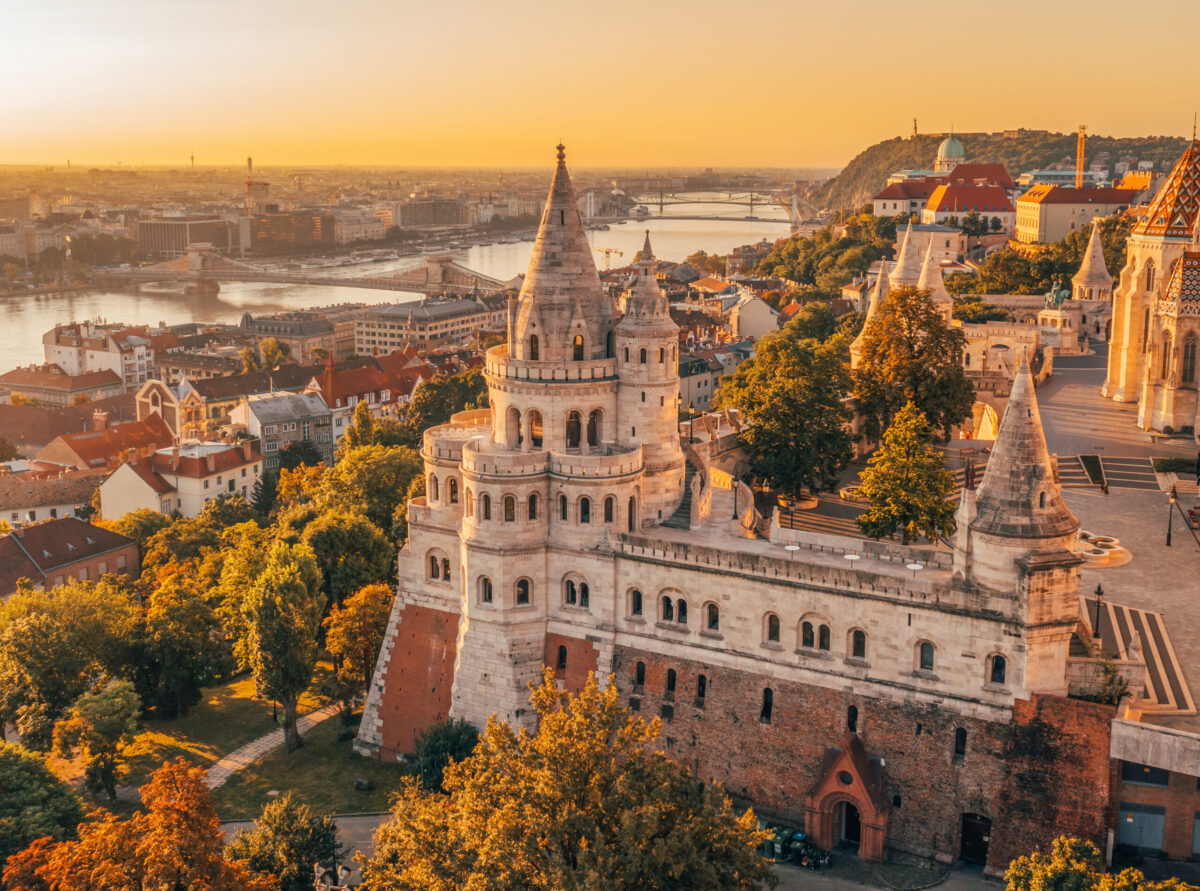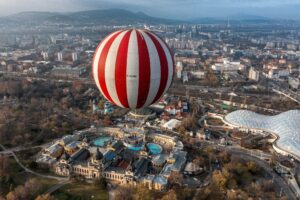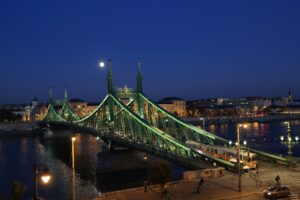Once hailed as one of Europe’s crown jewels, the Buda Castle District still reigns in beauty. Perched high above the Danube, its cobbled streets, grand facades, and sweeping views weave a timeless tapestry of history, legend, and charm. Join us as we explore some of the area’s most notable landmarks!
National Gallery
Dominating the southern end of Castle Hill, the Royal Palace has served many roles over the centuries, from medieval fortress to royal residence. Today, its grand Baroque wings house the Hungarian National Gallery, the country’s premier fine art museum. Spanning from medieval panel paintings and Gothic altarpieces to 19th‑century landscapes and modern works, the collection offers a sweeping journey through Hungary’s artistic heritage. Stepping onto the Savoy Terrace continues that journey in the open air, with panoramic views over the Danube, Pest’s skyline, and the city’s most iconic landmarks unfolding like a living canvas.
1014 Budapest, Szent György tér 2. | Website

St. Stephen’s Hall
Initially created in 1902 to showcase the finest achievements of Hungarian applied arts, St. Stephen’s Hall honored Hungary’s first king in both name and grandeur. Lavished with gilded stuccoes, carved wood, sparkling chandeliers, and Zsolnay ceramics, it was among the Royal Palace’s most stunning interiors. Destroyed during World War II and used as a storeroom afterwards, the hall has been faithfully rebuilt from original plans, photographs, and surviving fragments. Since then, it once again dazzles visitors with its turn‑of‑the‑century elegance and masterful craftsmanship.
1014 Budapest, Szent György tér 2. | Website

Royal Riding Hall
Originally completed in 1902 to serve the equestrian needs of the Royal Guard, the opulent Royal Riding Hall once stood as a testament to Hungary’s significance within the Austro-Hungarian Empire. Severely damaged in World War II and later demolished, it was lost for decades. In recent years, the hall has been meticulously rebuilt to its former glory, based on original plans and photographs. Featuring ornate façades, grand arched windows, and elegant proportions, the revived building now hosts cultural events and exhibitions, adding a new chapter to the Castle District’s living heritage.
1014 Budapest, Csikós udvar | Website

Matthias Church
Matthias Church, so named after King Matthias Corvinus, has stood at the heart of Buda’s Castle District since the 13th century. Over time it has witnessed royal coronations, served as a mosque during the Ottoman occupation, and endured wars and reconstructions. Its striking Neo‑Gothic appearance is the result of a grand 19th‑century restoration by Frigyes Schulek, who added magnificent details and crowned its roof with shimmering, patterned Zsolnay tiles. Now, the church’s vibrant covering, ivory-white belfry, and richly decorated interior make it one of Budapest’s most iconic landmarks.
1014 Budapest, Szentháromság tér 2.

Fisherman’s Bastion
Built from Kőbánya limestone, the Fisherman’s Bastion was designed by Frigyes Schulek between 1895 and 1902 as the final stage of the Matthias Church restoration. Its seven spired towers honor the seven chieftains of the conquering Magyar tribes, while its name recalls the medieval fishermen’s guild that once defended this stretch of the castle wall. Originally planned to feature statues of the chieftains, the figures were instead placed in the Millennium Memorial on Heroes’ Square. Today, its fairy‑tale terraces offer free, year‑round views over the Danube, Parliament, and Castle Hill.
1014 Budapest, Szentháromság tér 2.


 Funzine
Funzine



